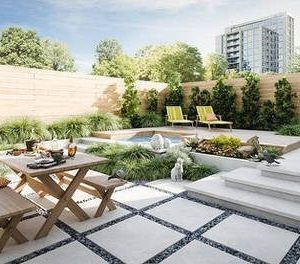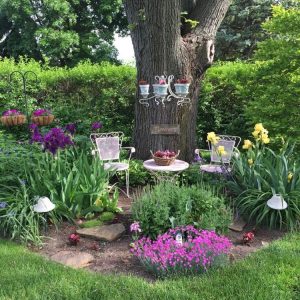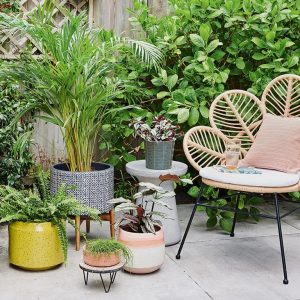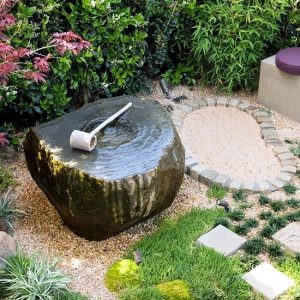When spring rolls around after a long winter, you don’t want to waste a minute of that glorious warmer weather to get growing! Starting seeds indoors is a time-honored way to get a jump on the season. With a few dollars-worth of seeds, you can grow lots of plants very inexpensively. Starting your own seeds also allows you to try out unusual and interesting varieties that you can’t find at a local garden center. Here’s what you need to know to successfully start seeds indoors for planting in your garden once temperatures warm up.
:strip_icc():format(webp)/growing-cucumber-plants-indoors-a7ca7193-8aea7d30e278493a877a1e8dc7028b0b.jpg)
If it’s your first time starting seeds indoors in winter, it’s best to go small. Pick just one or two types that are easy to grow from seed like these favorite flowering annuals:
:strip_icc():format(webp)/Orange-Marigolds-05a9b51652d3435185f0f77ad2021b50.jpg)
Many of us have memories of these jaunty flowers in our grandma’s or mom’s garden. There are loads of colorful varieties, including ones you might not find in garden centers so growing your own from seed is your best bet.
:strip_icc():format(webp)/Pink-Cosmos-ca600b7dc2a041bfa2ef22e8fd5444b2.jpg)
These cheery flowers come in delicate pastel shades as well as vibrant orange, yellow, and pink.
Grow them, eat them: This edible flowering plant grows vigorously and comes in lots of colors.
:strip_icc():format(webp)/Purple-Morning-Glories-0e3c6535d7db482b8b887083e05635ed.jpg)
There’s so much to love about big, cheery sunflowers. Bonus: Birds and bees love them, too.
:strip_icc():format(webp)/alaska-nasturtium-cec6f933-585b8cb2217841db863686ff2b535868.jpg)
Test Garden Tip: Look on the seed package label to find the number of weeks you’re supposed to start seeds indoors before the average last frost date. It usually takes about six to eight weeks to give your seedlings a head start on spring, so count backward from your area’s frost date to figure out when you should start your seeds indoors.
:strip_icc():format(webp)/sunflowers-abc4ac2fd0c0463789c3ecb06eeadb49.jpg)
Plastic seed trays and seed-starter kits are super easy for growing seeds indoors. But you can dig through your recycling bin, too. Just remember to punch a drainage hole in each container before planting. Cardboard egg cartons work well, but you can also repurpose items such as clean, cut-down milk jugs and yogurt cups. Or, you can make your own seed starter pots from newspaper.
:strip_icc():format(webp)/egg-carton-planter-d34352be-f2f3d7f4346143c59d34c0c9394506c8.jpg)
Even though the planting instructions on the packet might vary, you’ll need the same supplies to start any seeds indoors. Here’s what you’ll need:
Fill pots with fresh, moistened seed-starting mix. Don’t use garden soil, which is too heavy and may have insects or diseases in it. Leave about a half-inch of room to the top.
Follow the seed packet instructions for planting. Some will suggest making a shallow hole in the center of the potting mix to put the seeds in and others will say to add seed right on the surface. Add one seed to each pot or cell. Use the crease of the seed packet or place seeds in a creased piece of paper to help direct the seeds where you want them to go.
Sometimes not every seed will germinate. To increase your chances of success, add 2-3 seeds to each pot and thin out the extras once everything has sprouted.
Once you’ve sown the seeds, mist each container enough so that the potting mix is damp, but not drenched with water. The water will also help the potting mix settle around the seeds.
Label each of your pots so you know what’s growing in them. Loosely cover the pots with clear plastic wrap or zip-top bag, which helps maintain humidity and warmth.
Place your seed pots in a location that’s warm and free of drafts, but not in direct sun. The top of a refrigerator works well because it’s out of the way and it gives off just enough heat around it to help the seeds grow. The ideal temperature is about 75°F but no hotter than 90°F. Once the tiny seedlings emerge, remove the cover and move them into a sunny window. They need about 12 hours of light a day, so supplement with grow lights as necessary.
You started your seeds. Their first leaves are poking up in the pots. What do you do next?
After seeds have sprouted, take off the plastic wrap or other covering so they can have room to grow.
As the seedlings make their presence known, they need their space. Keep the ones that look healthy and strong, and snip the rest so there’s just a single plant per pot.
After they’re about two inches tall and have a couple sets of leaves, your seedlings need an upgrade. Transplant them into larger containers, this time in regular potting mix instead of seed-starting mix.
Don’t let the seedlings dry out. Misting them is the best way to give them a drink. Don’t put them under a faucet or hose, because the water pressure can wash them right out of their containers.
Before you can move your seedlings out into the garden (keeping your frost-free date in mind), you need to give them a few days to slowly get used to life on the outside. That’s what’s known as hardening off your plants. To do this, place the seedlings outside for a short time in a protected spot (about an hour or two). Each day, increase the length of time you leave them outside until they can remain outdoors all day.
Starting seeds indoors will let you have a lush, beautiful garden for a fraction of the price of picking up new plants at your local garden center. After the last frost of the season has passed, your seedlings should be ready to go out into the garden. If you’re successful, you’ll soon have healthy, towering plants that look nothing like the tiny seeds they came from.
Frequently Asked Questions
-
Not enough light can result in spindly, stretched out seedlings (like the pea seedlings shown above) that are desperately trying to find more brightness.
Use a grow light or move your plants into a better lit spot.
-
Wilting seedlings might be a sign of damping off, which is caused by a fungus that sometimes appears because of overwatering or overcrowding. Make sure you use fresh seed-starting mix that has been sterilized to kill any fungi or bacteria.







